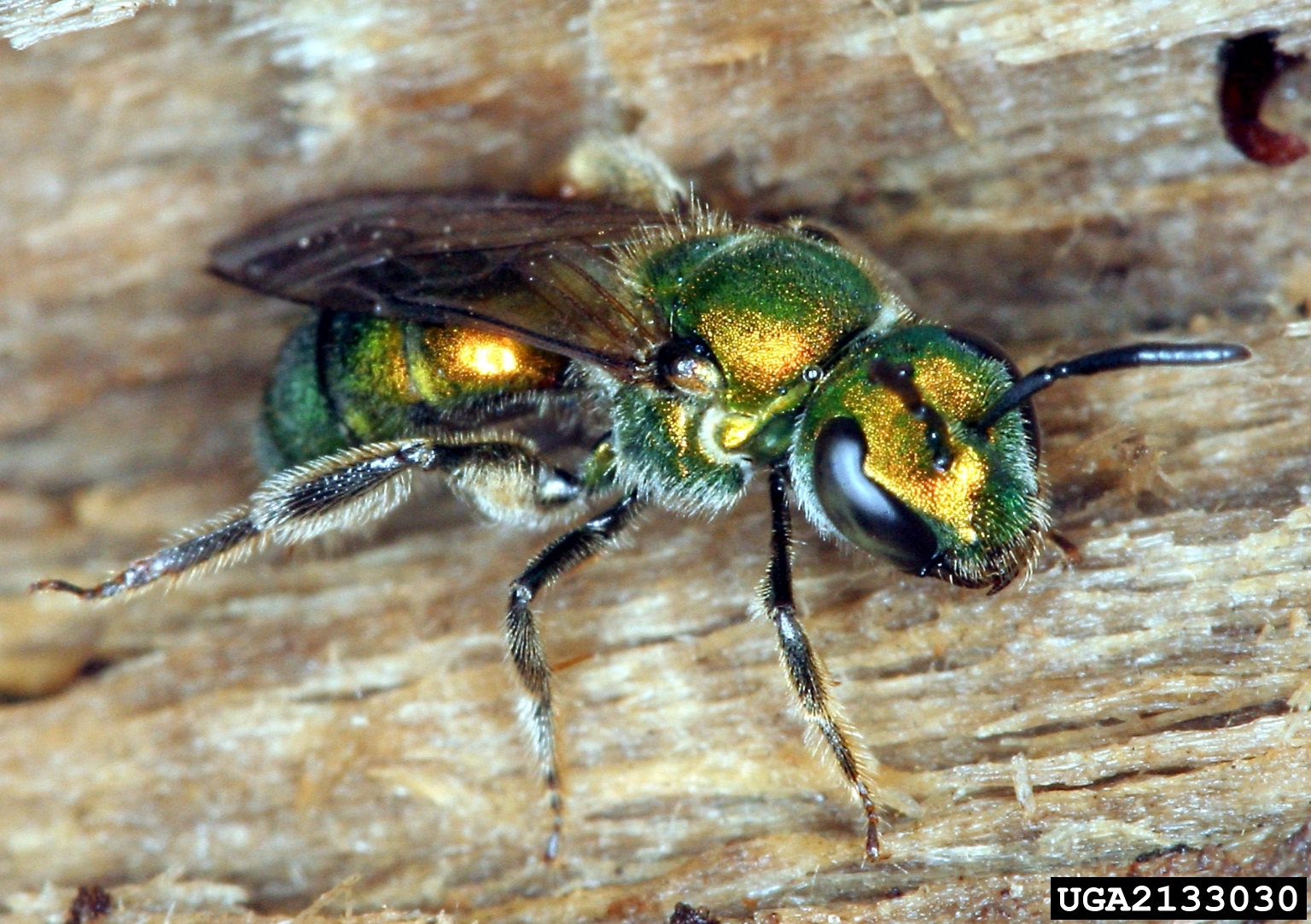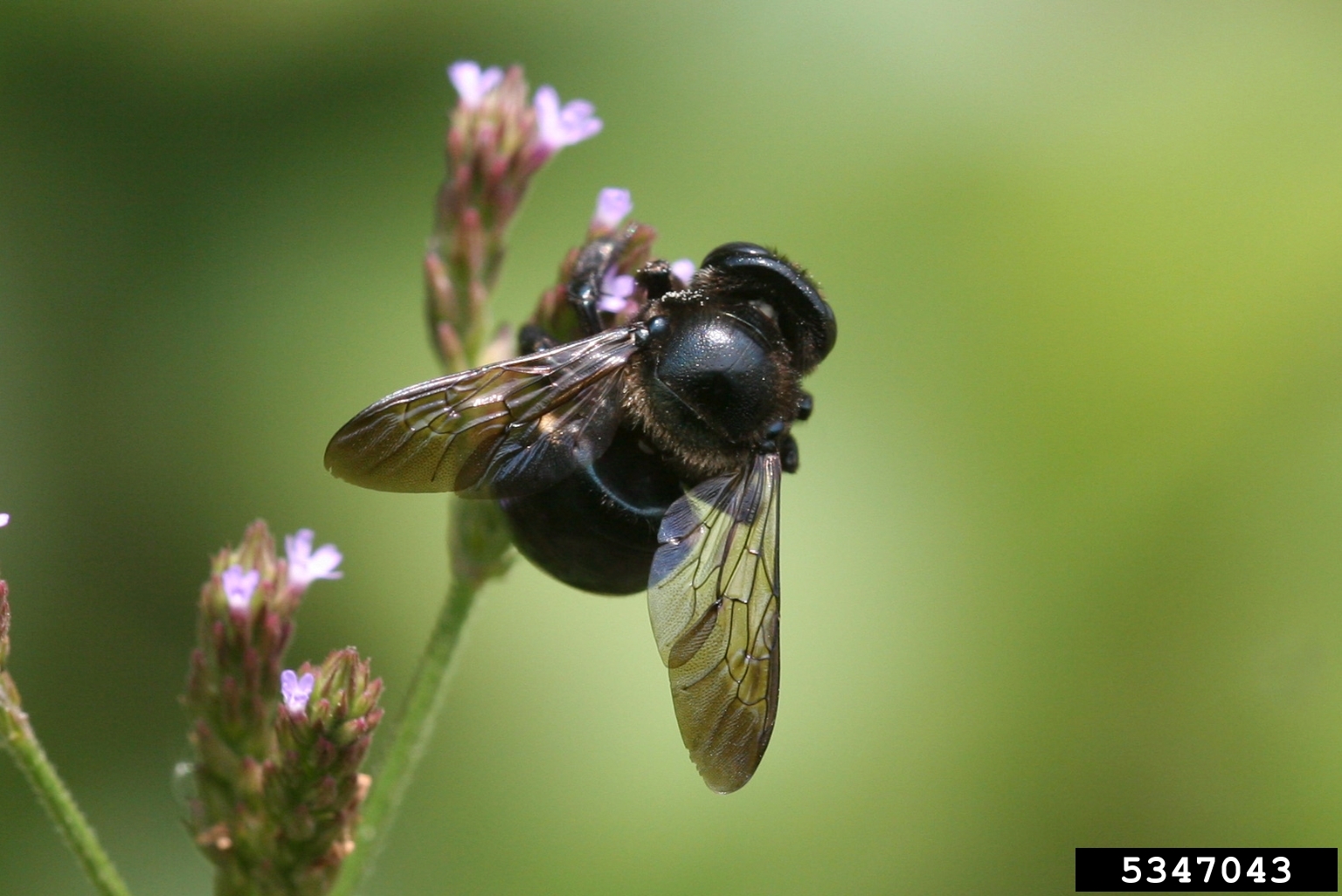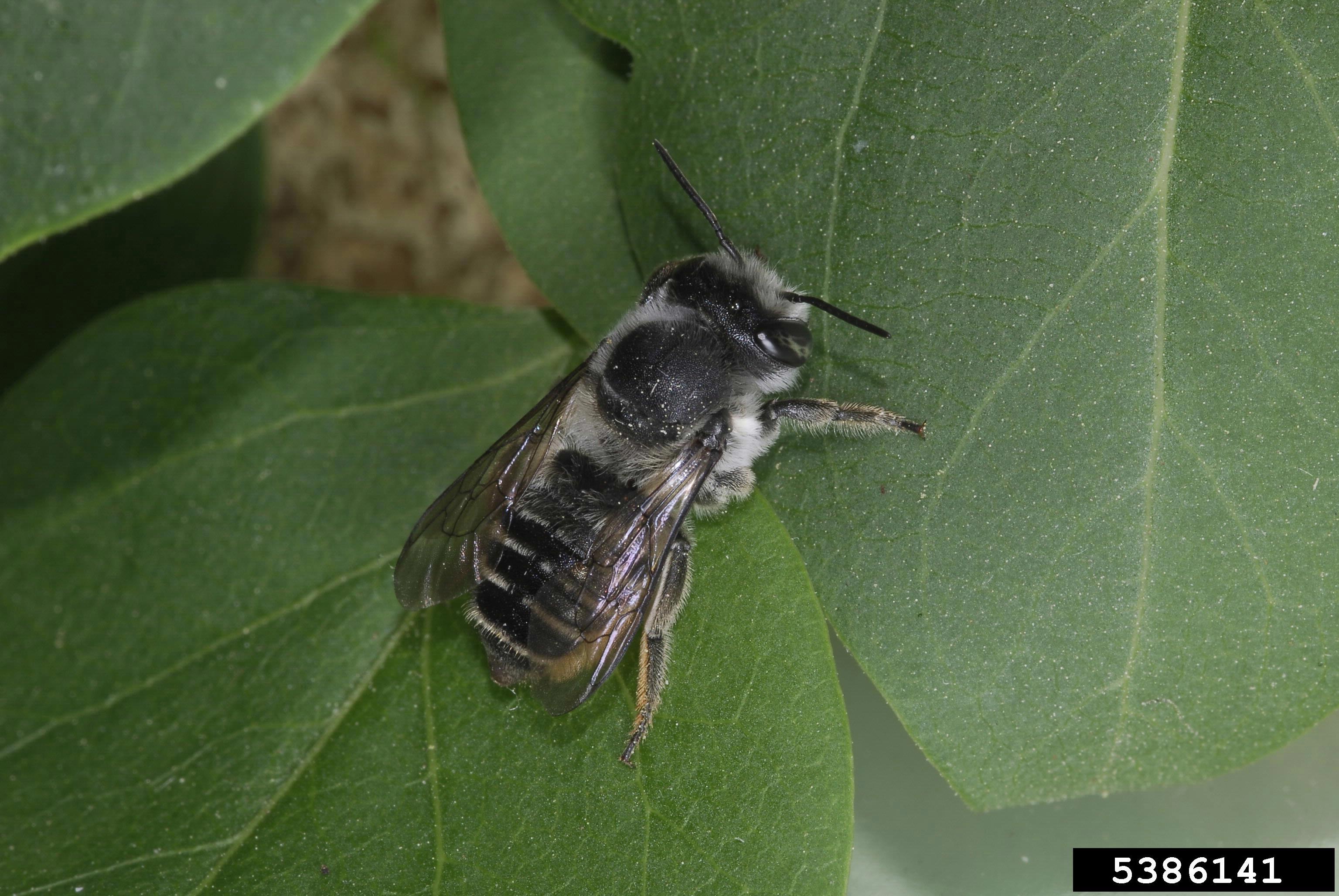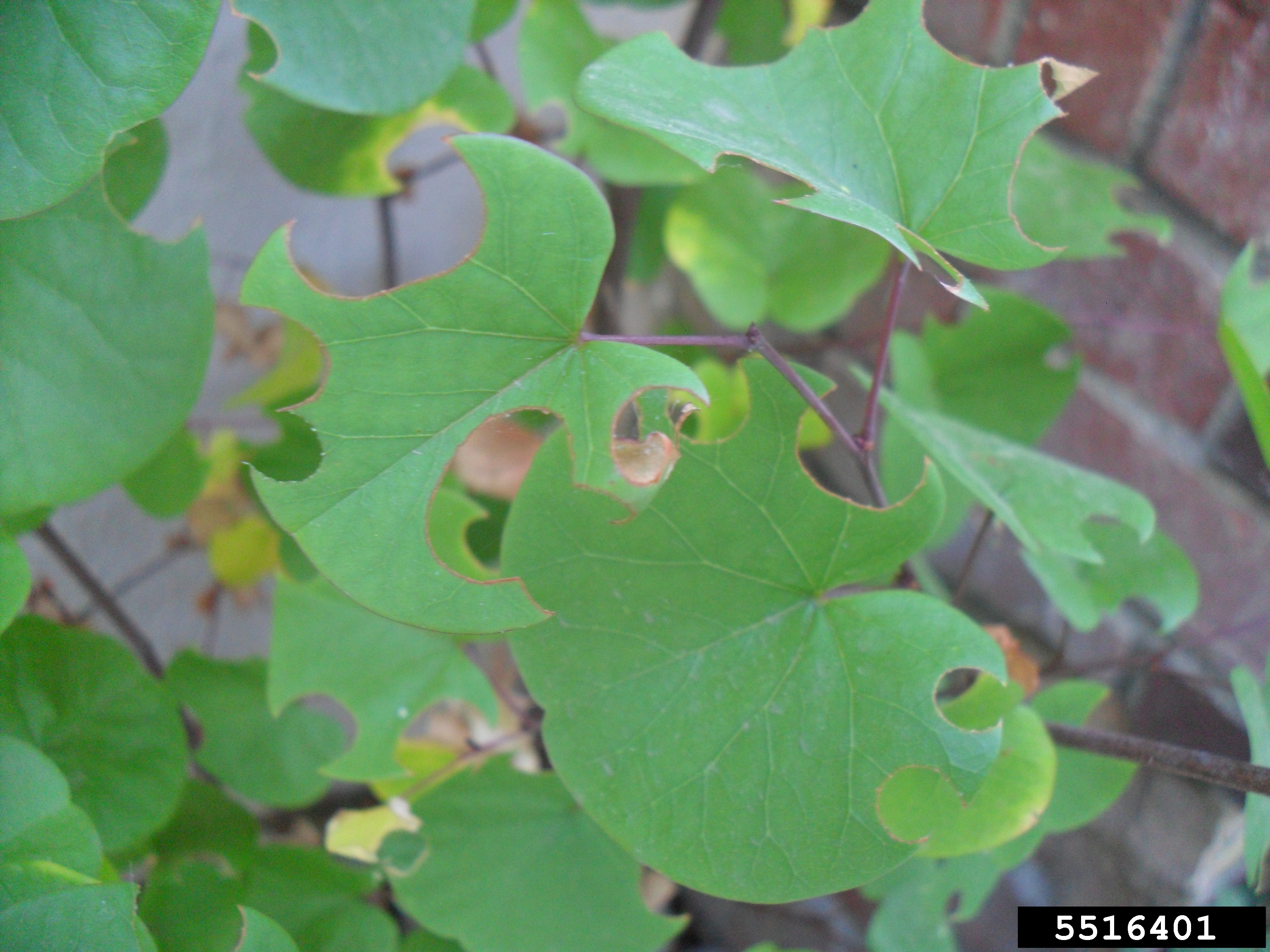 Solitary Bees - May 13, 2020 Jeff Schalau, Agent, Agriculture & Natural Resources University of Arizona Cooperative Extension, Yavapai County Solitary bees are common in Arizona but rarely noticed. However, 4,400 species of solitary bees have been described in North America. Solitary bees, as the name implies, nest singly either in the soil, soft wood, or plant stems. Ninety percent of all bee species are solitary types including leafcutter, digger, mason, sweat, and carpenter bees. More than likely, a homeowner would notice the signs of their presence rather than the bee itself. Examples are the circular leaf sections removed by leafcutter bees or small mounds of soil with holes at their center created by digger bees. Solitary bees are not usually aggressive and their stings are considered mild. Only female bees can sting. All solitary bees, however, pack their nest cells with nectar and pollen to feed the developing larvae. Although solitary bees individually produce nests, sometimes many will nest in close proximity. This is particularly common with digger bees. As mentioned above, leafcutter bees cut circular-shaped pieces of leaves to construct their nest cells. Their habit of leaf cutting, as well as their nesting in soft wood or plant stems, often attracts negative attention and concern of home gardeners. However, we should learn to tolerate them as the lasting damage to plants is minimal. Digger bees generally prefer nesting in areas with morning sun exposure and well-drained soils containing little organic matter. Burrows are excavated in areas of bare ground or sparse vegetation. A person might be stung if handling one roughly or if one becomes trapped in clothing. In any case, I encourage homeowners to be tolerant of them and other solitary bee species. The orchard mason bee is a native North American solitary bee that has been popularized in seed catalogs as a pollinator of apples, cherries, and other tree fruits. It is found throughout most of North America. The orchard mason bee is usually slightly smaller than a honey bee and a shiny dark blue in color. The female uses existing holes in wood for a nest. She chooses holes slightly larger than her body, usually 1/4 to 3/8 inches in diameter. The bee first places a mud plug at the bottom of the hole. When the female has provided a sufficient supply of food for the larva, she lays an egg and then seals the cell with a thin mud plug. She repeats the process and continues until the hole is nearly full. When finished, she plasters a thick mud plug at the entrance. Many backyard gardeners actively rear mason bees (see May 29, 2019 Backyard Gardener). Carpenter bees are large solitary bees that resemble bumble bees. Like mason bees, they nest in wood. Male and female carpenter bees overwinter as adults within their old nest gallery. Adults emerge in the spring (April and early May) and mate. There is one generation per year. Gallery construction is a time- and energy-consuming process, and the female will preferentially refurbish an old nest rather than excavate a new one. She bores into the wood perpendicular to the grain for one to two inches then makes a right angle turn and excavates along the wood grain for four to six inches to create a gallery (tunnel). Like other solitary bees, she creates a series of provisioned brood cells in the excavated gallery. Most people are aware of honeybees and consider them beneficial. Honeybees do provide pollination services for many commercial crops and produce honey which is often harvested. They are also social and live in colonies. However, many people are not aware that all honeybees in North America are introduced and may compete directly with native solitary bees for food resources. I prefer to think of honeybees as a form of domestic livestock kept for human benefit. Solitary bees are important native insects that may become even more important for commercial crop pollination as domestic honeybees face the challenge of Colony Collapse Disorder. We can protect native and domestic bees by limiting our use of insecticides, especially during flowering and in the daytime when bees are active. When choosing to use pesticides, select the least toxic formulation and always read label precautions carefully. Pollinator protection guidance is often provided on pesticide labels. See the online edition for additional information and images (see URL below). You can follow the Backyard Gardener on Twitter – use the link on the BYG website. If you have other gardening questions, email the Master Gardener Help Desk in Prescott (prescottmg@gmail.com) or Camp Verde (verdevalleymg@gmail.com) and be sure to include your name, location, and phone number. Find past Backyard Gardener columns or provide feedback at the Backyard Gardener web site: https://cals.arizona.edu/yavapai/anr/hort/byg/. Images  Sweat bee (David Cappaert, Bugwood.org).
Sweat bee (David Cappaert, Bugwood.org). Carpenter bee (Xylocopa micans, Johnny N. Dell, Bugwood.org).
Carpenter bee (Xylocopa micans, Johnny N. Dell, Bugwood.org). Leafcutter bee (Megachile perihirta) (Joseph Berger, Bugwood.org).
Leafcutter bee (Megachile perihirta) (Joseph Berger, Bugwood.org). Leafcutter bee (Megachile perihirta) "damage" (Kimberly Steinmann, University of California, Bugwood.org).
Leafcutter bee (Megachile perihirta) "damage" (Kimberly Steinmann, University of California, Bugwood.org).Additional Resources Solitary Bees, Colorado State University Extension planttalk.colostate.edu/topics/insects-diseases/1480-solitary-bees/ Native Bee Poster, www.pollinator.org. www.pollinator.org/pollinator.org/assets/generalFiles/Identifying_Native_Bees_PosterFINAL.pdf Carpenter Bees, University of California IPM ipm.ucanr.edu/PMG/PESTNOTES/pn7417.html Leafcutter Bees, Colorado State University Extension extension.colostate.edu/topic-areas/insects/leafcutter-bees-5-576/ Most Ground-Nesting Bees and Wasps are Good Bugs, University of Georgia Extension extension.uga.edu/story.html?storyid=8031 Creating a Solitary Bee Hotel, University of Nebraska-Lincoln Extension extensionpublications.unl.edu/assets/pdf/g2256.pdf |